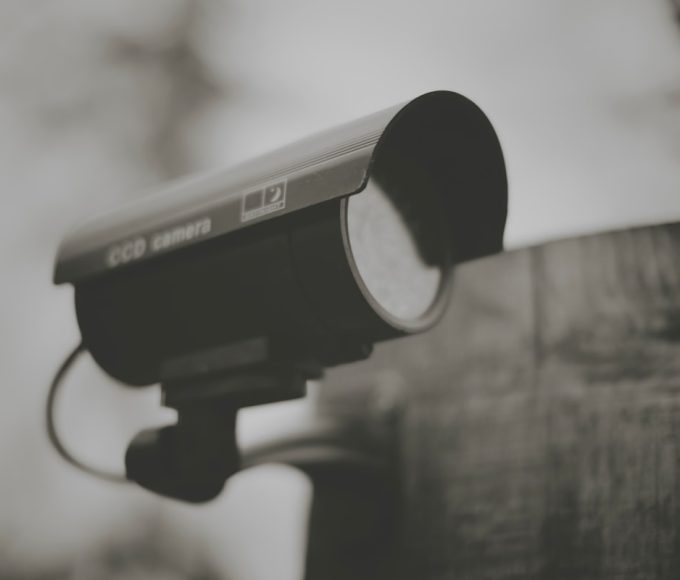From AI to Cloud: Hikdistribution’s Forecast for Security Industry Trends in the New Decade
Best Practices for Reprinting: Security Industry Trends in 2020 and Beyond” We are glad that you find our article “Security Industry Trends: What to Expect in the New Decade” valuable and would like to share it with your audience. To ensure that our content is properly credited and not viewed as duplicate material, we ask that you follow these best practices:
- Precede the article with a statement like this: “This post is a repost of Hikvision’s blog post, ‘Security Industry Trends: What to Expect in the New Decade,’ with permission from the original author.”
- Provide a direct link to the original article at Hikdistribution’s blog: https://www.hikdistribution.com/blogs/news/security-industry-trends-what-to-expect-in-the-new-decade
- Use quotation marks for any direct quotes taken from the article and give clear attribution to the original source.
- Customize the post with your own introduction and conclusion to add value for your readers.
Thank you for sharing our content with your audience. If you have any questions or concerns, please do not hesitate to contact us.
“As we move into the future, understanding trends becomes increasingly important for businesses as they seek to stay ahead of the curve and avoid becoming outdated. The security industry has undergone significant changes in the past decade, and exciting innovations are expected to continue in the 2020s. Emerging technologies such as multi-dimensional perception, ultra-high definition (UHD), low light imaging, artificial intelligence (AI), and cloud technology are creating new possibilities for the security industry. In addition, millions of cameras and other security devices are being connected into networks, making the security industry a vital component of the future Internet of Things (IoT) world.
At Hikdistribution, we believe that several key trends will have a significant impact on the security industry in 2023 and beyond.
Multi-Dimensional Perception
Security cameras currently rely on image capturing to simulate human vision and extend people’s “eyesight.” However, what if they could use other senses, such as hearing, smell, or even detections beyond visual range, to identify and respond to incidents?
One example of this trend is video cameras integrated with centimeter and millimeter wave radars for object detection. These cameras extend perception beyond visual range, improving the detection of objects and movement tracking up to 100 meters away in any weather. Another example is the integration of sonar arrays in cameras to precisely detect and locate the source of a vehicle’s horn, helping to reduce noise pollution on roadways and in communities.
More “senses” such as smoke detection, heat detection, or even pressure detection can be embedded in cameras to monitor and report events or incidents accurately. The multi-dimensional perception trend will enhance security systems and endow them with more capabilities to create safety in the near future.
Multi-Intelligence Cameras
Artificial intelligence applications have been emerging slowly in the security industry for many years. However, most AI-powered security cameras can only run a single algorithm due to computing power limitations. This means they can incorporate only one intelligent function at a time, such as counting people or cars.
With the increased performance of AI chips, computing power in security cameras has improved dramatically. Multi-intelligence technology will be the trend for the next generation of AI-empowered cameras, enabling several intelligent tasks to be accomplished by one camera.
For instance, with multi-intelligence cameras, two or three cameras will be enough to monitor a vehicle intersection. This reduces the equipment, installation, maintenance, and management costs. Manufacturers can insert different algorithms into security cameras according to specific application scenarios, allowing customers to choose customized functions for their needs.
Proactive and Comprehensive Security Systems
Reactive CCTV systems will no longer suffice for security operations teams looking for new opportunities to enhance their operational efficiency. Many customers are now seeking proactive and comprehensive security systems that integrate CCTV monitoring, alarm systems, access control, and fire protection.
With AI technology development, CCTV monitoring processes are becoming more automated by analyzing live and recorded video to detect, classify, and track predefined objects. Proactive and intelligent video analysis enables the deployment of valuable comprehensive security systems, improving the return on investment for CCTV and non-CCTV system integration. When a camera detects an incident, a linkage will trigger the alarm system automatically, prompting security personnel to check the security camera live feed. Conversely, when alarm, access control, or fire protection systems report an incident, the CCTV system will be activated to verify what happened.
Proactive and comprehensive security systems will be the direction for security operations to increase their efficiency and value as organizations undergo digital transformation to boost productivity.
Advancements in Ultra-High Definition
People always want to see more and see with more clarity, which is why the pursuit of ever-higher image resolution has been a driving force in the development of security industry technology. After the HD era, the Ultra High Definition (UHD) era is the natural next step.
UHD used to be an expensive technology, but now it is benefiting from improvements in transmission and encoding technologies. It is becoming more and more cost-effective for large-scale use in the security industry, from entry-level to top-tier systems.
With greater bandwidth and lower latency transmission technology, the smooth transmission of UHD images is now possible, and widespread adoption of 4K and 8K resolution cameras will create real opportunities.
Moreover, continuously optimized encoding technology that vastly decreases the bitrate of video is another stimulus for UHD applications in the security industry. As the bitrate of recorded footage is greatly reduced, bandwidth and storage costs are also reduced.
Enhanced Visibility in Any Condition
Most security incidents happen at night, but conventional security cameras may easily lose colors and critical details in ultra-low light environments. That’s why low light imaging technologies have become increasingly popular in the security industry, enhancing the visibility of objects and identifying details in any time and condition.
Another important innovation is thermal imaging, which can detect the heat information of any object with a temperature above absolute zero. Thermal imaging technology allows cameras to “see” in low-visibility conditions, such as fog, smog, rain, and snow, even at night. Thermal cameras have huge potential in various applications, like perimeter defense, fire detection, and temperature measurement.
Moving to Cloud-based Security
As we mentioned at the beginning, more security devices, including cameras, are being connected over the internet, making them parts of the IoT world. Thus, “moving to the cloud” has been a focus for the security industry, especially for video security operations. Cloud services can bring vast benefits in efficiency, flexibility, cost-effectiveness, and security.
Video surveillance as a Service (VSaaS) has been a major trend in the security industry, especially for small and medium-sized businesses, as it is an ideal choice to move their video-based security systems to the cloud. It is a technology to host the hardware and software of security operations in the cloud, so that users can access their IP cameras and IoT devices, check video footage, or alarm linkage from anywhere. Users can distribute costs over a contract term and pay only for the services that they use.
For enterprises running chain stores, demands on VSaaS are increasing greatly. Moving video security services to the cloud, these businesses can quickly and economically centralize their security operations and remotely check the status of their stores.
To greet the “moving to the cloud” trend, security system integrators are also taking hold of VSaaS as it is a good chance to strengthen their business models. With VSaaS, system integrators can provide services for their clients using the cloud, such as system checks and remote maintenance, and consistently scale their business with efficiency.
Higher Demands on Cybersecurity
With millions of security devices being connected in IoT, security systems are evolving from single and isolated to open and connected. People are getting more and more concerned about the security of their data and privacy, and accordingly, have set higher demands for the security industry on cybersecurity.
To help minimize the risk of security breaches, a multi-layered approach – including network, application, and device layering – that addresses a full range of cybersecurity threats concurrently will be demanded and expected by security organizations and IT departments. Security manufacturers will also have to cover the security of their products throughout the whole lifecycle.
Final Words
As we move further into the 2020s, we anticipate continued innovation in technologies and applications that will shape the security industry. In addition to the trends discussed above, emerging technologies like 5G, big data, and smart enterprise operations, as well as increasing regulations around data protection, such as the EU’s GDPR, will likely have a significant impact.
To learn more about the topics covered in this article, or to explore Hikdistribution’s cutting-edge security solutions, please visit our website at www.hikdistribution.com.”








